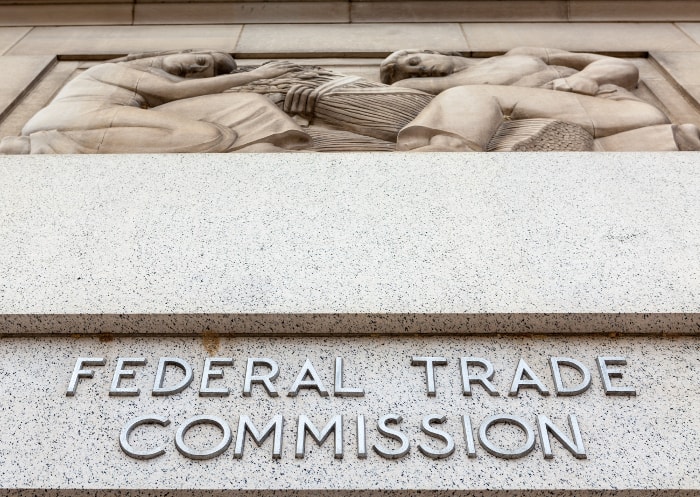In this post, we’ll dig into a recent email regarding Amazon’s affiliate program policy update and what it means for bloggers.
As with many of the policies in their affiliate program, this statement can be interpreted in different ways and, based on all the emails we’ve received has caused a lot of confusion.
Keep reading to get it all straightened out.
What Did Amazon Send?
Amazon sent out the following email to associates including the following:
To meet the Associate Program’s requirements, you must (1) include a legally compliant disclosure with your links and (2) identify yourself on your Site as an Amazon Associate with the language required by the Operating Agreement. To comply with Federal Trade Commission (FTC) regulations, your link-level disclosure must be:1. Clear. A clear disclosure could be as simple as “(paid link)”, “#ad” or “#CommissionsEarned”.2. Conspicuous. It should be placed near any affiliate link or product review in a location that customers will notice easily. They shouldn’t have to hunt for it.
In the end the above requirements concerning the FTC, while not previously emphasized so directly by Amazon, are not actually new. They’ve been a requirement for years and something bloggers were required to have been compliant with all along.
Why Did Amazon Send The Update?
In July 2019, Amazon had a complaint given to the FTC surrounding Prime Day promotions and their associates not properly disclosing affiliate relationships. The compliant centered around Amazon’s lack of statements regarding FTC compliance.
This update appears to be addressing that complaint, by reminding everyone of the FTC’s requirements of disclosing affiliate relationships.
What Do I Need to Do?
If you’ve been following the FTC guideline’s all along, at this time I don’t see a reason to do anything differently.
On the other hand, if you don’t have proper FTC disclosures in place, it could be more important than ever to do so. Amazon has shown before that it is more than willing to permanently close accounts for policy violations, and this email update seems to indicate they are taking the complaint against them seriously.
What About The Requirement To Mark Every Link As Paid?
The email update includes an example of marking “(paid link)” after an affiliate link.
At this time, I am reading this as something that applies more to a social media post on Instagram or Twitter rather than the need to mark every link in a blog post as such.
Again, the FTC guidelines are not new, and I have not found any instances where they’ve enforced this idea on a blog post.
Should this change, we will definitely offer a fix to make this easy and painless to do. In fact, we could do this now, but I don’t see a reason to offer it for sale at this time, especially when doing so could have a negative impact on overall reader experience.
How to Remain Compliant
Currently, our suggestions for remaining compliant remain the same as they did before Amazon sent out this update in October.
It is important to understand that you need to maintain compliance with two different entities: Amazon and the FTC. The requirements are different for each.
In the end, you really should use two separate disclosures.
Amazon Disclosure Compliance
Note that this section only pertains to complying with Amazon’s policy on identifying yourself as an affiliate. There are many more requirements in their policy document that need to be followed as well. See our Amazon Compliance Fix for help in getting your site fully compliant.
Amazon requires that the you have the following statement “on your Site or any other location where Amazon may authorize your display or other use of Program Content”.
“As an Amazon Associate I earn from qualifying purchases.”
(it is also acceptable to use the older version, “…is a participant in the Amazon Services LLC Associates Program…” However, unlike the FTC’s requirements that don’t require exact wording, you want to make sure you are using one of these 2)
As far as we know, this disclosure can be anywhere on your site: Post content, sidebar, footer, or according to this article, on a disclosure page linked from every page on your site that could have an Amazon affiliate link on it.
FTC Compliance
The FTC also requires that you disclose affiliate relationships, but with different requirements.
- The disclosure needs to identify your affiliate relationship
- The disclosure needs to state the fact that you will make a commission through sales. You can’t just say “affiliate links” and assume the reader knows what that means.
- The disclosure needs to come before the first affiliate link (so it can’t go in the footer)
- To comply with one of Amazon’s policies, it is a good idea not to use the word “support” i the disclosure. As in, “these commissions help to support our site.”
Putting It All Together
Ultimately, Amazon’s affiliate program policy update is a great reminder to get your site compliant with FTC guidelines if you haven’t already.
Make sure you have a disclosure at the top of any posts with affiliate links. Make sure it describes that you will make money from purchases made through those links and never include the word “support.”
At the same time, make sure you have Amazon’s specific disclosure either on every page, or an a policies page linked from every page.



Leave a Reply
You must be logged in to post a comment.